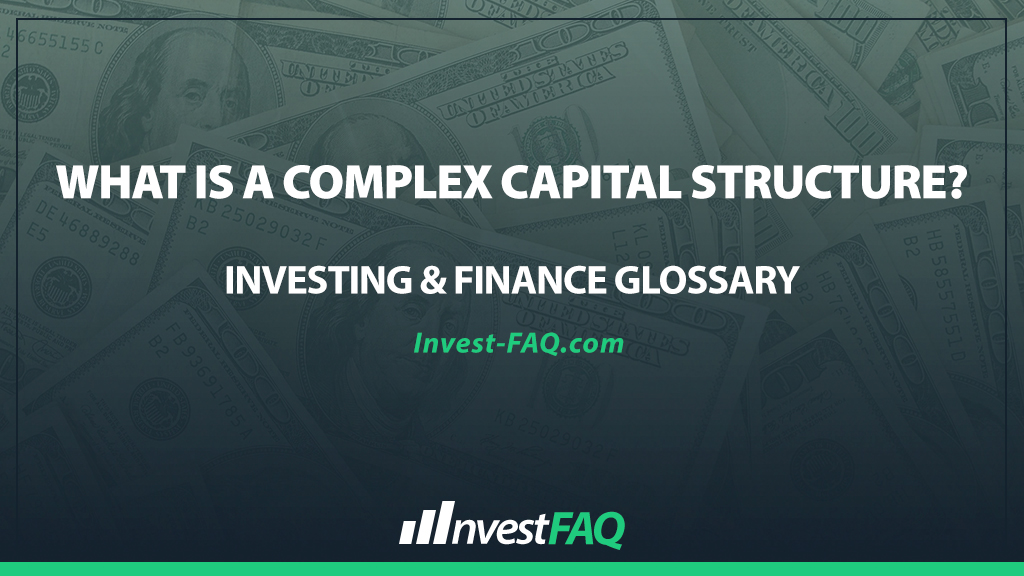
Complex Capital Structure
Contents
A complex capital structure refers to a company’s financial framework that includes a variety of equity and debt instruments, potentially with different rights, preferences, and features. This can include common and preferred stocks, convertible securities, warrants, and different classes of debt, creating a multi-layered financial architecture.
Businesses adopt complex capital structures to meet various financing needs, optimize capital costs, and align with strategic goals.
This flexibility allows companies to attract different types of investors and lenders by offering diverse financial instruments tailored to various risk and return profiles.
However, managing a complex capital structure requires careful planning and communication to ensure all stakeholders understand their rights and the company’s obligations.
Example of a Complex Capital Structure
“Global Tech Innovations Inc.” has issued:
Common stock with voting rights.
Preferred stock with a fixed dividend rate and conversion options into common stock.
Bonds convertible into common stock at a future date.
Warrants that allow holders to purchase additional shares at a predetermined price.
This mix of equity and debt instruments, each with unique features and investor rights, constitutes a complex capital structure.
In the “Global Tech Innovations Inc.” scenario, the diversity of securities serves multiple purposes. Preferred stock provides financing at a lower cost than common equity due to its fixed dividend and potential conversion features.
Convertible bonds offer debt financing with the upside of equity conversion, appealing to investors seeking both security and growth potential. Warrants incentivize further investment by existing or new stakeholders under favorable conditions. Each component plays a strategic role in the company’s overall financing strategy, balancing cost, risk, and control considerations.
Significance for Investing & Finance
The management of a complex capital structure has significant implications in accounting for several reasons:
Earnings Per Share (EPS) Calculations: The presence of convertible securities and options requires careful computation of basic and diluted EPS, impacting reported financial performance.
Financial Reporting: Accounting for the various components of a complex capital structure demands comprehensive disclosure in financial statements to accurately convey the company’s obligations and the potential impact on equity.
Investor Relations: Transparent and effective communication about the capital structure’s complexity is crucial in maintaining investor confidence and ensuring stakeholders understand their position and rights.
Strategic Financial Management: A complex capital structure offers tools for strategic financial management, balancing leverage, growth financing, and shareholder value creation. However, it also requires sophisticated analysis to navigate the trade-offs between risk and return.
In summary, a complex capital structure provides companies with a nuanced toolkit for financing and strategic growth, enabling the targeting of specific investor segments and financing conditions.
However, it demands meticulous accounting, reporting, and management to optimize its benefits and minimize potential risks or misunderstandings among investors and other stakeholders.
FAQ
What defines a company with a complex capital structure?
A company has a complex capital structure when it includes various types of securities beyond common stock, such as preferred stock, convertible bonds, or warrants, which could potentially be converted into common stock.
In a complex capital structure, the earnings per share (EPS) calculation must consider the dilutive effect of convertible securities, requiring the use of the treasury stock method or if-converted method to compute diluted EPS alongside basic EPS.
Why might a company choose to have a complex capital structure?
Companies may opt for a complex capital structure to diversify their financing options, attract different investors, and optimize their capital costs by balancing debt and equity in a way that suits their strategic goals and market conditions.
What are the implications of a complex capital structure for investors?
For investors, a complex capital structure requires a thorough analysis to understand the potential dilution of ownership and its impact on share value, as well as the implications for the company’s financial health and future growth potential.
